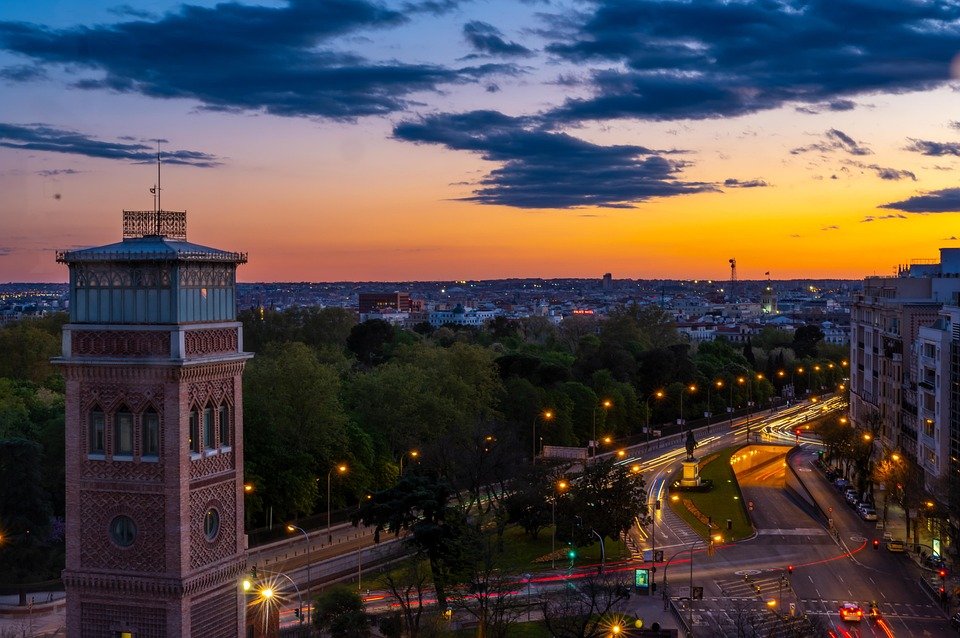Wondering when to go to Madrid without running into huge crowds or bad weather? You're not alone! Planning a trip to this vibrant city can feel overwhelming, especially when you consider factors like climate, budget, local events, and your personal preferences. Luckily, I've got you covered with everything you need to know about the best times to experience Madrid.
Overview of Madrid’s Climate
Let's start with the weather in Madrid, as it sets the mood for your entire trip. The city experiences a Mediterranean climate characterized by hot summers and mild winters. Summers can get pretty intense, often reaching temperatures above 30°C (86°F), while winters tend to be cooler, averaging around 10°C (50°F).
Madrid has distinct dry and wet seasons, and you can expect most of the rainfall during spring and autumn. If you're sensitive to heat or just prefer mild weather, then timing your visit around spring or fall is ideal. Just be mindful that the temperature in Madrid fluctuates, so packing layers is always a smart move!
Month-by-Month or Seasonal Breakdown
Spring (March to May)
Spring is one of the most popular times to visit Madrid. The weather is mild, with temperatures ranging from 10°C to 20°C (50°F to 68°F). You'll also find the city blooming with flowers, which adds an extra layer of beauty.
Events: The famous Las Fallas festival takes place just outside the city in Valencia in March, but it's an excellent time for locals to be buzzing and heading to nearby festivities.
Pros: Fewer crowds than summer and great weather make it a perfect time for outdoor activities.
Cons: Some weekends might be busier due to local events.
Best For: Photographers, couples, and anyone who enjoys outdoor activities.
Summer (June to August)
As the heat turns up, so does the energy in Madrid. Summer is peak tourist season, with temperatures often soaring to 35°C (95°F) or higher.
Events: The city comes alive with music festivals, outdoor film screenings, and solstice celebrations.
Pros: Lots of events and activities are happening around the city, perfect for those who thrive on social energy.
Cons: Expect large crowds and higher accommodation prices. Plus, the heat can be overwhelming, especially during the day.
Best For: Travelers looking for a lively atmosphere and cultural experiences are likely to enjoy summer in Madrid.
Autumn (September to November)
Autumn brings moderate temperatures ranging from 15°C to 25°C (59°F to 77°F). The crowds begin to thin out, which can provide a more relaxed experience.
Events: San Isidro, Madrid's most famous festival, is in May, but autumn sees the start of Madrid's cultural season, featuring theater and film festivals.
Pros: Great weather for sightseeing and outdoor adventures without the summer crowd.
Cons: The temperature can drop unexpectedly, so keep an eye on the forecast.
Best For: Budget travelers and those looking to soak in the cultural scene of Madrid.
Winter (December to February)
Madrid can be quite chilly in winter, as the temperature can dip to around 4°C (39°F). However, if you bundle up, you can enjoy a magical side of the city.
Events: The Christmas markets and festivities in December are such a treat! Plus, there are fewer tourists.
Pros: Great deals on hotels and flights. You'll experience local traditions like the Christmas markets and Three Kings Parade.
Cons: The weather can be crisp and sometimes damp, which may not suit everyone.
Best For: Budget travelers and those who want to experience Madrid without the hustle and bustle.
Tips Based on Travel Style
Now that you have an overview, let's tailor your visit according to your interests:
For Budget Travel
The ideal time to visit Madrid for budget travelers is during the winter months. Hotel prices plunge in December and January, and you'll find fewer tourists, making it easier to navigate.
For Avoiding Crowds
If you want to dodge the throngs, consider visiting during late autumn (November) or early spring (March). You still get pleasant weather and can enjoy the city at a more leisurely pace.
For Outdoor Activities or Cultural Events
Spring is the perfect period if you want to engage in outdoor activities like park picnics or visiting famous sites without sweating it out. If you're interested in cultural events, make sure to plan around the autumn months to catch local festivals.
For Romantic or Solo Trips
Fall (September to November) has a soft charm with its mild weather and gorgeous foliage, making it an ideal backdrop for romantic strolls. Solo travelers will enjoy the mellow vibe, which allows for more intimate interactions with locals.
It really depends on what kind of experience you're looking for. Some travelers love April because of the quiet vibe, while others aim for the sparkle of summer festivals in July. The range of options means there's no “one-size-fits-all” approach.
FAQs
Is March a good time to visit Madrid?
Absolutely! The weather is just warming up, and you can enjoy various outdoor activities without hefty crowds.
When is the rainy season in Madrid?
Madrid's rainy season typically occurs in spring (April and May) and fall (October). Be prepared, but expect only sporadic rain rather than constant downpours!
What's the cheapest time to visit Madrid?
Typically, the winter months (December to February) offer the best deals on flights and accommodations.
What's the peak season in Madrid?
Summer (June to August) attracts the most tourists, leading to higher prices and crowded attractions.
Whichever time you choose to go to Madrid, you're bound to discover a city filled with history, culture, and flavor. Bon voyage!








